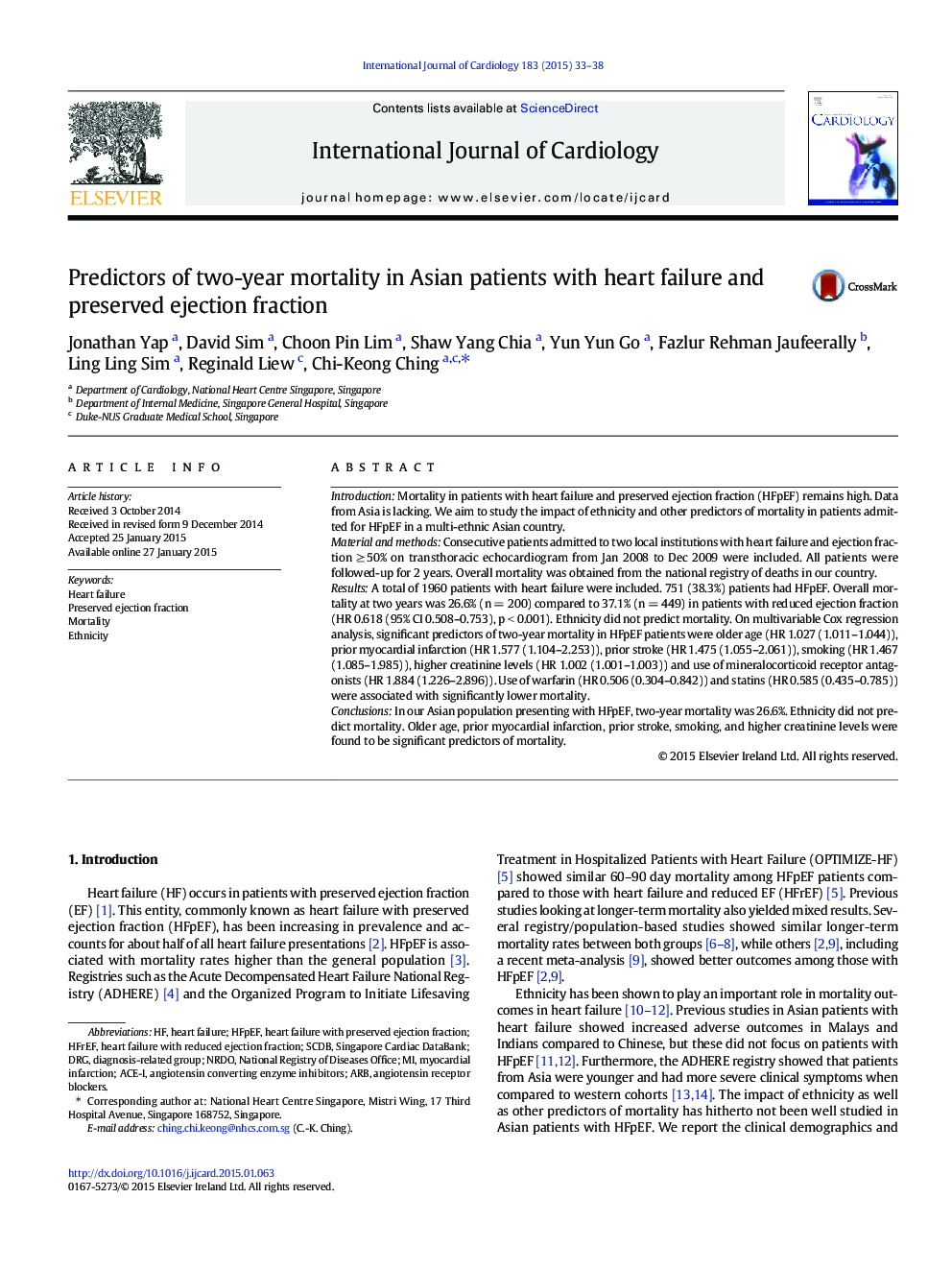| Article ID | Journal | Published Year | Pages | File Type |
|---|---|---|---|---|
| 5968140 | International Journal of Cardiology | 2015 | 6 Pages |
IntroductionMortality in patients with heart failure and preserved ejection fraction (HFpEF) remains high. Data from Asia is lacking. We aim to study the impact of ethnicity and other predictors of mortality in patients admitted for HFpEF in a multi-ethnic Asian country.Material and methodsConsecutive patients admitted to two local institutions with heart failure and ejection fraction â¥Â 50% on transthoracic echocardiogram from Jan 2008 to Dec 2009 were included. All patients were followed-up for 2 years. Overall mortality was obtained from the national registry of deaths in our country.ResultsA total of 1960 patients with heart failure were included. 751 (38.3%) patients had HFpEF. Overall mortality at two years was 26.6% (n = 200) compared to 37.1% (n = 449) in patients with reduced ejection fraction (HR 0.618 (95% CI 0.508-0.753), p < 0.001). Ethnicity did not predict mortality. On multivariable Cox regression analysis, significant predictors of two-year mortality in HFpEF patients were older age (HR 1.027 (1.011-1.044)), prior myocardial infarction (HR 1.577 (1.104-2.253)), prior stroke (HR 1.475 (1.055-2.061)), smoking (HR 1.467 (1.085-1.985)), higher creatinine levels (HR 1.002 (1.001-1.003)) and use of mineralocorticoid receptor antagonists (HR 1.884 (1.226-2.896)). Use of warfarin (HR 0.506 (0.304-0.842)) and statins (HR 0.585 (0.435-0.785)) were associated with significantly lower mortality.ConclusionsIn our Asian population presenting with HFpEF, two-year mortality was 26.6%. Ethnicity did not predict mortality. Older age, prior myocardial infarction, prior stroke, smoking, and higher creatinine levels were found to be significant predictors of mortality.
